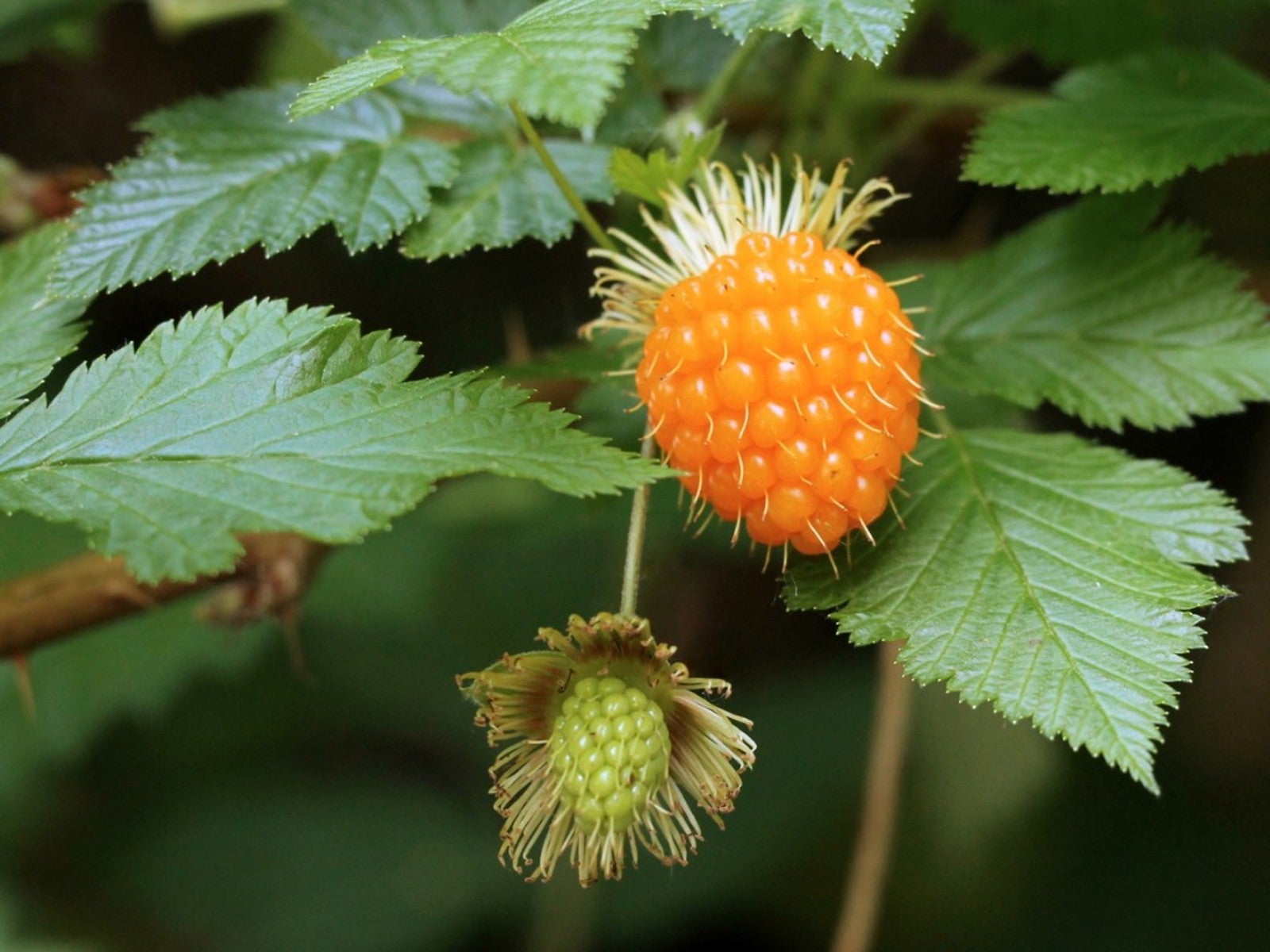What Is A Salmonberry – Salmonberry Plant Care Guide


Ever heard of growing salmonberry plants in the garden? Salmonberry? What in the world is that you ask? Read on to learn more.
What is a Salmonberry Bush?
Salmonberry plants are native to the Pacific Coast, from Alaska to Northern California. Although they grow primarily in the rainy climate west of the Cascade Mountains, salmonberry bushes are sometimes found as far east as Idaho.
Salmonberry plants are members of the Rubus family, along with blackberries, dewberries, and raspberries. Although salmonberries resemble raspberries, they are orange, yellow, or red. The flavor is mildly sweet-tart, which makes them perfect for jams and jellies.
Native Americans traditionally enjoyed the berries with fresh salmon, thus the name. However, some sources say salmonberries are named for the pinkish-red color of the fruit. The berries are also enjoyed by birds and wildlife, including rabbits, elk, and deer.
The plants are especially valued for the big, rosy-red flowers, which bloom from early to mid-spring. The showy blooms are favored by Rufous hummingbirds that migrate north about that time, along with bees and other early pollinators.
Salmonberry Plant Care
Salmonberry bushes are suitable for growing in USDA plant hardiness zones 4 through 9. The easiest way to start growing salmonberry bushes is to purchase small plants from a greenhouse or nursery. You can also propagate new plants from hardwood cuttings taken from mature salmonberry bushes, but don’t remove too much growth from wild plants.
Irrigate growing salmonberry bushes weekly during dry weather, especially when berries are coming on and ripening. Salmonberry plants prefer full to partial shade. Although they’ll tolerate a sunnier location, they’ll need more water.
Sign up for the Gardening Know How newsletter today and receive a free copy of our e-book "How to Grow Delicious Tomatoes".
Mulch salmonberry plants every spring, using a mulch such as shredded bark, straw, dry grass clippings, or compost. This is also a good time to apply a light application of general-purpose, balanced fertilizer.
Prune salmonberry bushes occasionally, as they tend to grow in thickets. Although salmonberry plants aren’t as thorny as blackberries, the prickles can make berry-picking difficult.

A Credentialed Garden Writer, Mary H. Dyer was with Gardening Know How in the very beginning, publishing articles as early as 2007.